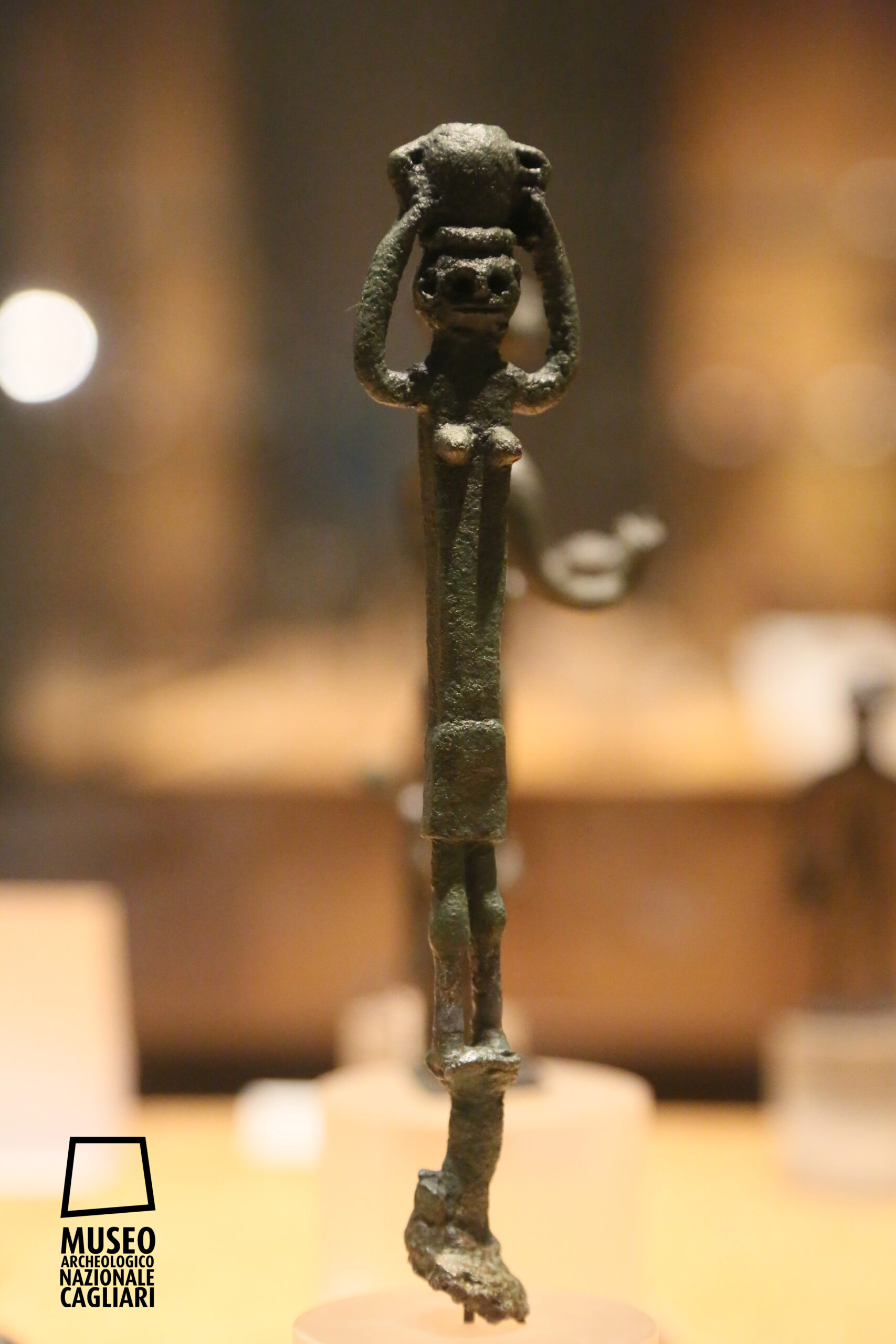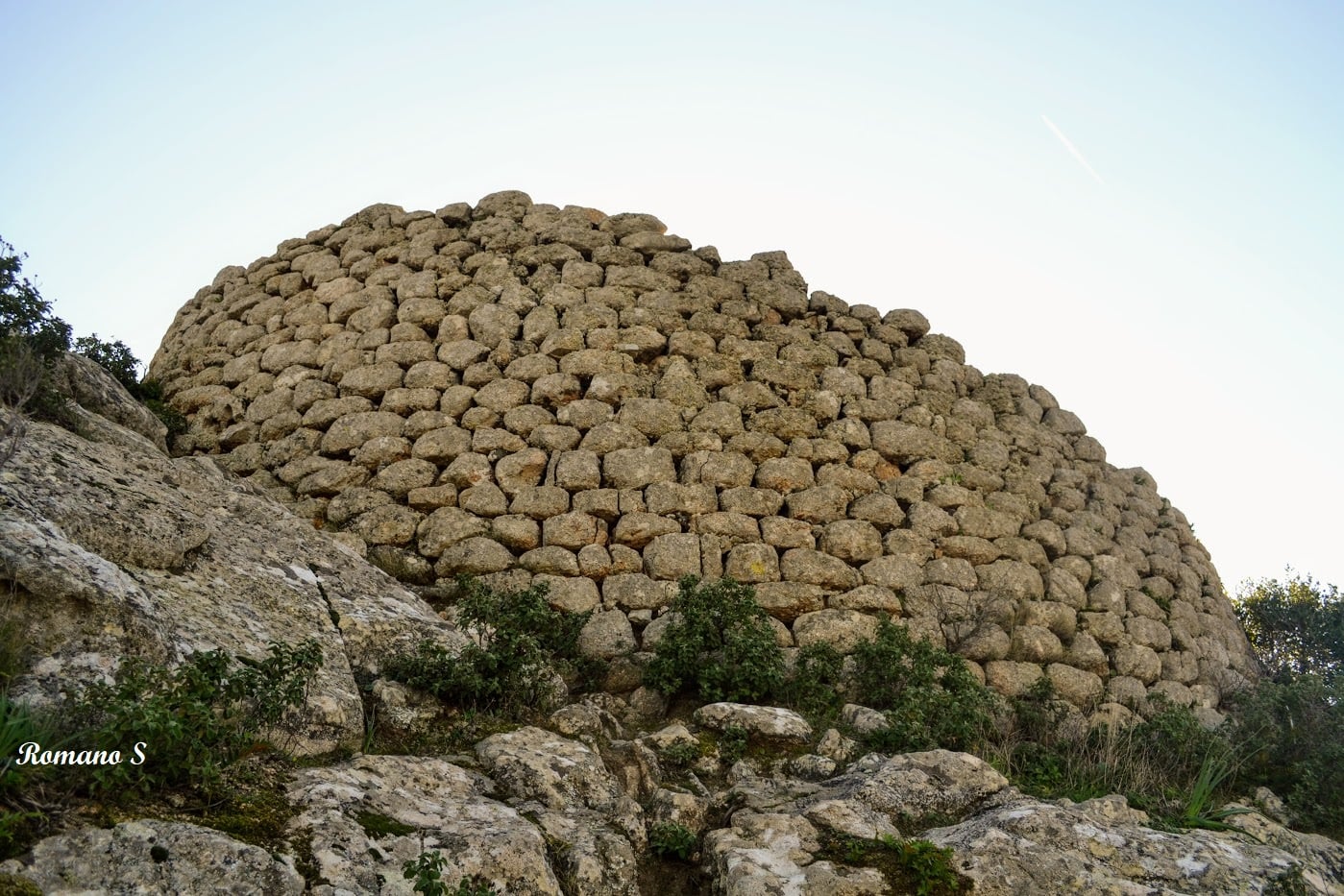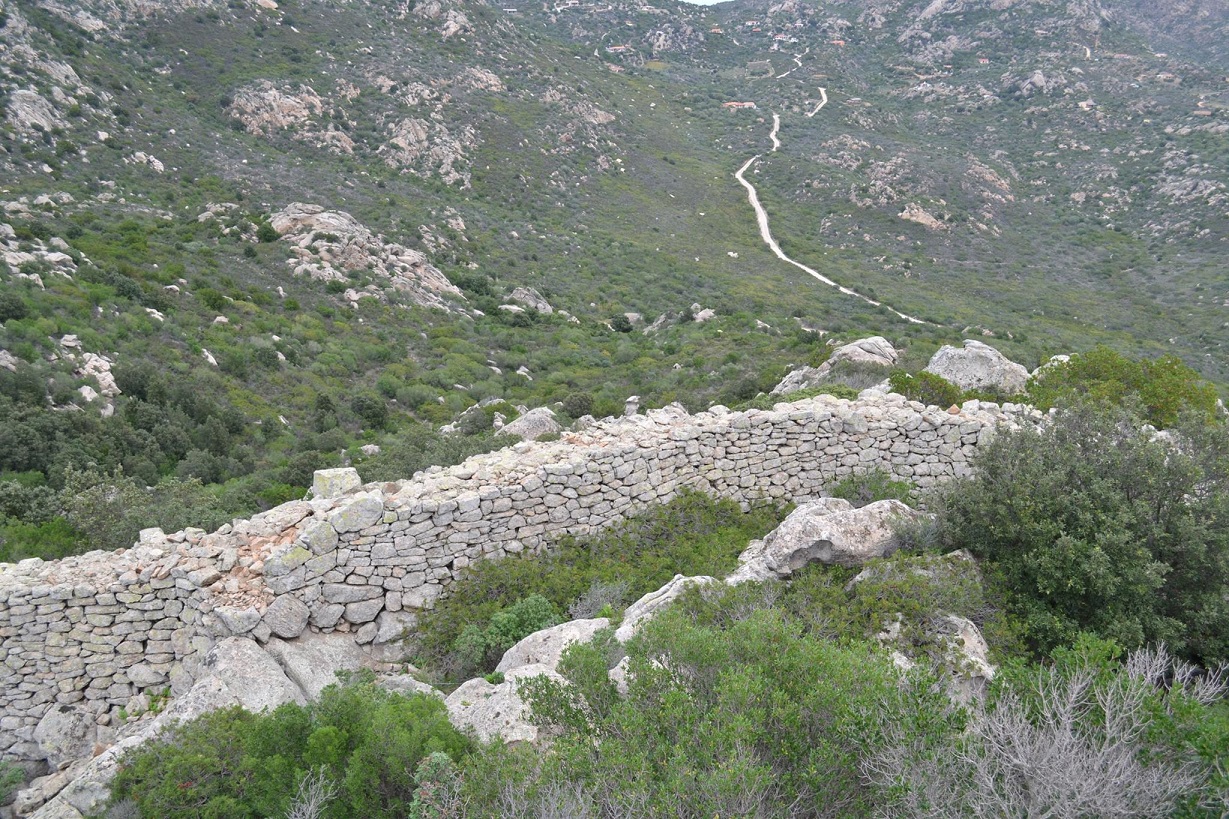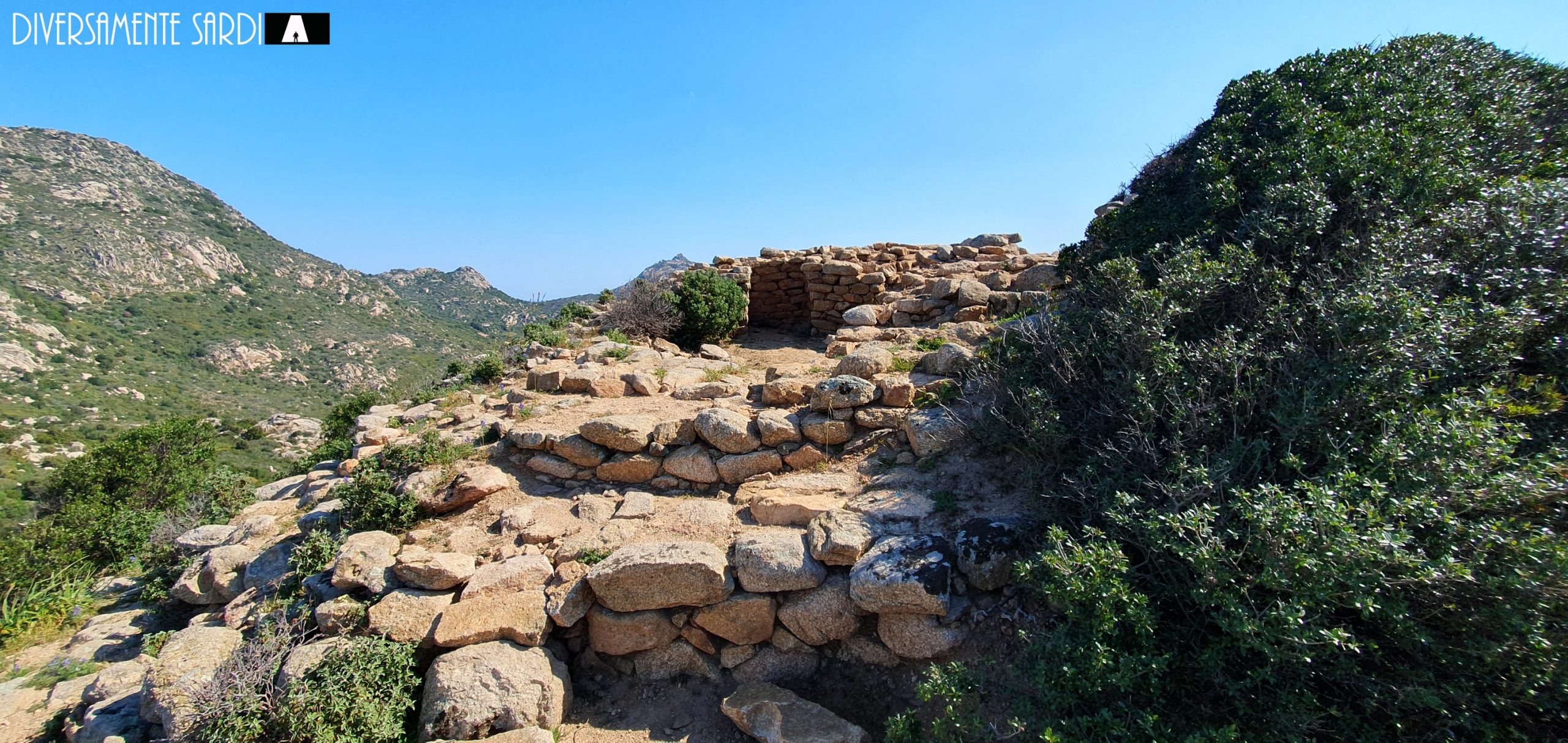Surrounded by a powerful wall, a rocky prominence overlooks the Gulf of Olbia: it is one of the most famous monuments of nuragic culture in the northeast of Sardinia.
From its nearly 250 meters in altitude, at the top of the peak ofCabu Abbas, it monitored the arrival of enemy vessels from a strategic position, its horizon reaching as far as the island of Tavolara. The nuragheRiu MulinuIt is one of the most well-known nuragic fortifications in the north of the island. It is located a few kilometers from Olbia and can be dated to around the 14th-13th century B.C. The central tower is well protected by a massive wall that encloses the hill for 220 meters in length, with a height and width reaching up to five meters. The main characteristic of the wall is that it is integrated into the rocky outcroppings found along its perimeter. It has two entrances: one to the north, the other to the south. Inside the walls, the structure is a single tower with a circular shape of about eight meters in diameter.
Made from granite blocks, the nuraghe is characterized by a corridor that features a small niche and a staircase that led to the upper floor, which is no longer accessible. The space under the staircase leads to a sacrificial pit, where fragments of burnt bones and ceramic artifacts have been found. The excavations, dating back to 1936, uncovered a bronze statuette depicting a woman with an amphora on her head. Thanks to this important discovery, scholars were able to date the construction and identify the nuraghe as a place linked to the sacred rituals of water worship. (Sardegna Turismo)
The photos of nuraghe Riu Mulinu are by Diversamente Sardi, Gianni Sirigu, Bibi Pinna, Pino Fiore, and Romano Stangherlin. The one of the bronze statuette mentioned in the post is taken from the website of the Museum of Cagliari.













